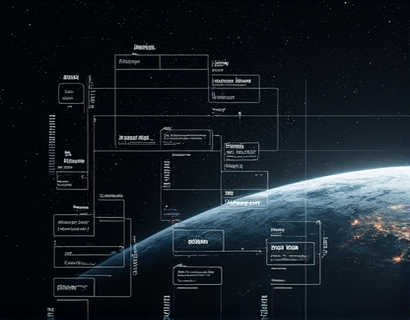Optimizing Leadership Management: A Comprehensive Dashboard for Efficient Team Administration Across Industries
In the fast-paced and ever-evolving business landscape, effective leadership management stands as a cornerstone for organizational success. Leaders across various industries face the daunting task of managing large, diverse teams, each with unique needs, challenges, and objectives. Traditional management approaches often fall short in providing the necessary tools and insights to streamline operations, enhance communication, and make informed decisions. This is where a sophisticated leadership management dashboard comes into play, offering a comprehensive solution to optimize team administration and drive productivity.
Understanding the Need for a Leadership Management Dashboard
The complexity of modern teams requires more than just intuitive leadership; it demands a strategic and data-driven approach. A leadership management dashboard serves as an integral tool for leaders to oversee and manage their teams efficiently. This platform integrates various functionalities into a single, user-friendly interface, allowing leaders to monitor performance, track progress, and facilitate seamless communication. By leveraging advanced analytics and real-time data, such a dashboard empowers leaders to make informed decisions, ultimately enhancing the overall performance of the organization.
Key Features of a Comprehensive Leadership Dashboard
A well-designed leadership management dashboard encompasses a range of features tailored to meet the diverse needs of organizational leaders. These features include:
- Real-Time Performance Tracking: Monitor individual and team performance metrics in real-time, providing immediate insights into productivity and efficiency.
- Customizable Dashboards: Tailor the dashboard to focus on specific KPIs and metrics relevant to the organization's goals and industry.
- Advanced Reporting Tools: Generate detailed reports with just a few clicks, enabling in-depth analysis and strategic planning.
- Enhanced Communication Channels: Facilitate seamless communication through integrated chat, task assignment, and notification systems.
- Resource Management: Optimize resource allocation by visualizing availability, skills, and workloads across the team.
- Project Management Integration: Seamlessly integrate with popular project management tools to streamline workflows and enhance collaboration.
Streamlining Operations Across Industries
The versatility of a leadership management dashboard makes it an invaluable asset across various sectors. Whether in healthcare, finance, manufacturing, or technology, the core functionalities remain relevant, adapted to meet industry-specific requirements. For instance, in the healthcare sector, a dashboard can help manage shift schedules, patient care assignments, and staff training programs. In finance, it can track project timelines, budget allocations, and compliance metrics. The adaptability of such a platform ensures that leaders can effectively manage their teams, regardless of the industry.
Enhancing Communication and Collaboration
Effective communication is the lifeblood of any successful organization. A comprehensive leadership dashboard addresses this by providing robust communication tools. Integrated chat features allow team members to collaborate in real-time, reducing the need for lengthy email threads and meetings. Task assignment functionalities ensure that everyone is aware of their responsibilities and deadlines, fostering a sense of accountability and teamwork. Notification systems keep leaders and team members informed about important updates and changes, ensuring everyone is on the same page.
Empowering Decision-Making with Data
One of the most significant advantages of a leadership management dashboard is its ability to empower leaders with data-driven insights. Real-time analytics and comprehensive reporting tools provide a clear picture of team performance, helping leaders identify areas of strength and opportunities for improvement. By analyzing trends and patterns, leaders can make informed decisions that drive productivity and efficiency. For example, identifying bottlenecks in project timelines or recognizing high-performing employees can lead to targeted interventions and strategic adjustments.
Case Studies: Success Stories from Diverse Industries
To illustrate the impact of a leadership management dashboard, consider the following case studies from different industries:
Healthcare:
A large hospital network implemented a comprehensive dashboard to manage its diverse staff, including doctors, nurses, and administrative personnel. The dashboard's real-time performance tracking and customizable dashboards allowed hospital administrators to monitor staff availability, patient care assignments, and training schedules. As a result, the hospital saw a 20% improvement in patient satisfaction scores and a 15% reduction in operational costs, primarily due to more efficient resource allocation and streamlined workflows.
Finance:
A multinational financial institution adopted a leadership dashboard to oversee its global operations. The dashboard's advanced reporting tools and project management integration enabled the finance team to track project timelines, budget allocations, and compliance metrics across different regions. This led to a 25% increase in project completion rates and a significant reduction in compliance violations, enhancing the institution's reputation and financial stability.
Manufacturing:
An automotive manufacturer implemented a dashboard to manage its complex supply chain and production processes. The resource management features helped the manufacturer optimize workforce scheduling and equipment utilization, leading to a 10% increase in production efficiency. Real-time performance tracking allowed managers to quickly address issues, reducing downtime and improving overall productivity.
Implementing a Leadership Management Dashboard: Best Practices
To maximize the benefits of a leadership management dashboard, organizations should follow these best practices:
- Define Clear Objectives: Clearly outline the goals and KPIs that the dashboard will help achieve.
- Customize the Dashboard: Tailor the dashboard to align with the organization's specific needs and industry requirements.
- Train Staff: Provide comprehensive training to ensure that all team members are comfortable using the dashboard and understand its functionalities.
- Encourage Feedback: Regularly solicit feedback from users to identify areas for improvement and enhance the dashboard's effectiveness.
- Monitor and Adjust: Continuously monitor the dashboard's impact and make adjustments as needed to ensure it remains a valuable tool for leadership.
Conclusion
A comprehensive leadership management dashboard is a powerful tool for optimizing team administration across various industries. By streamlining operations, enhancing communication, and empowering decision-making with data, such a platform can significantly boost productivity and efficiency. As businesses continue to grow and evolve, the ability to effectively manage large, diverse teams becomes increasingly critical. Embracing a sophisticated dashboard is a strategic move that can set organizations apart, driving them toward sustained success.










































